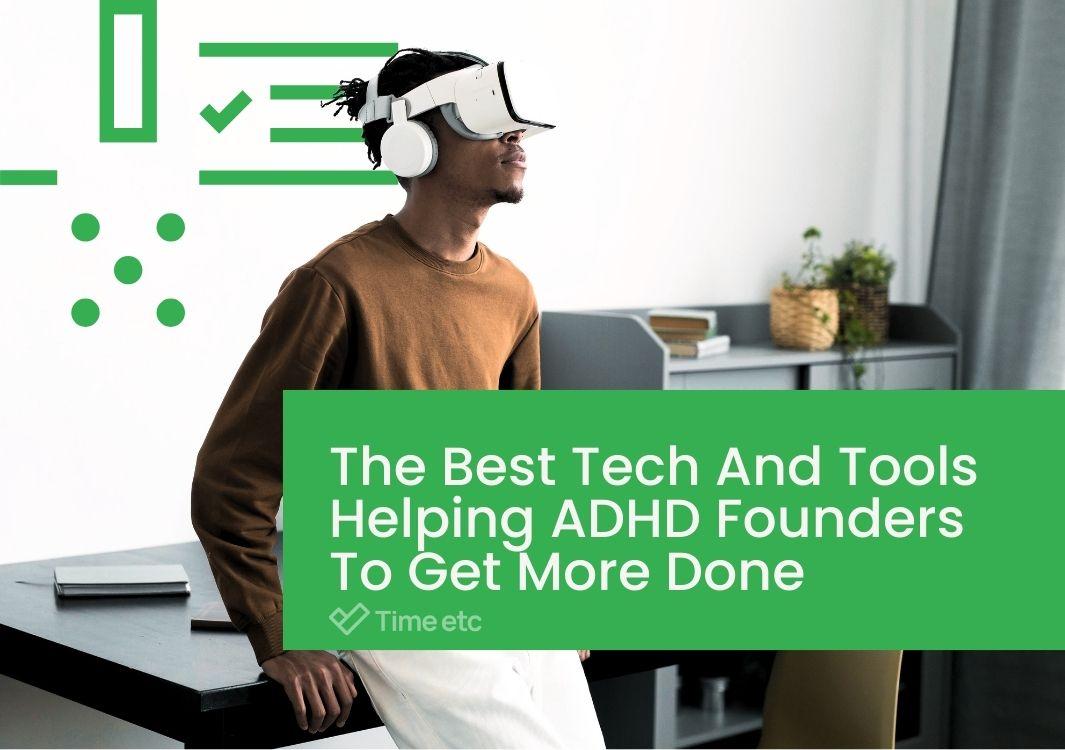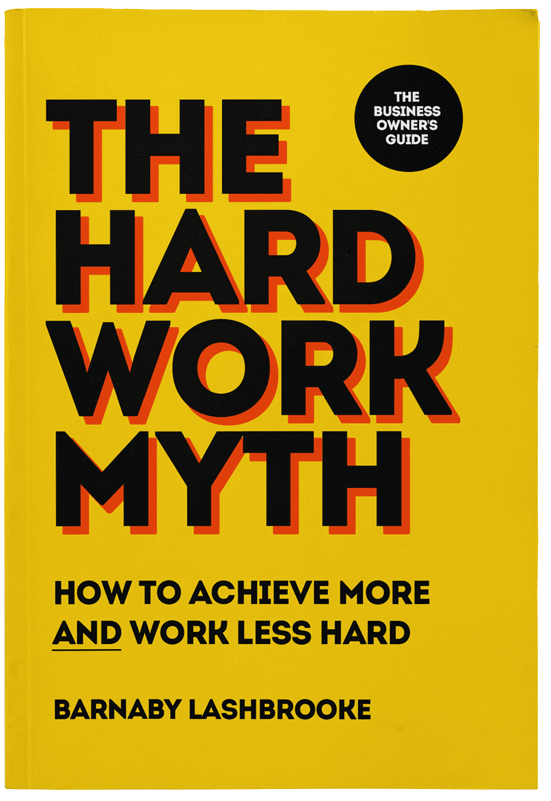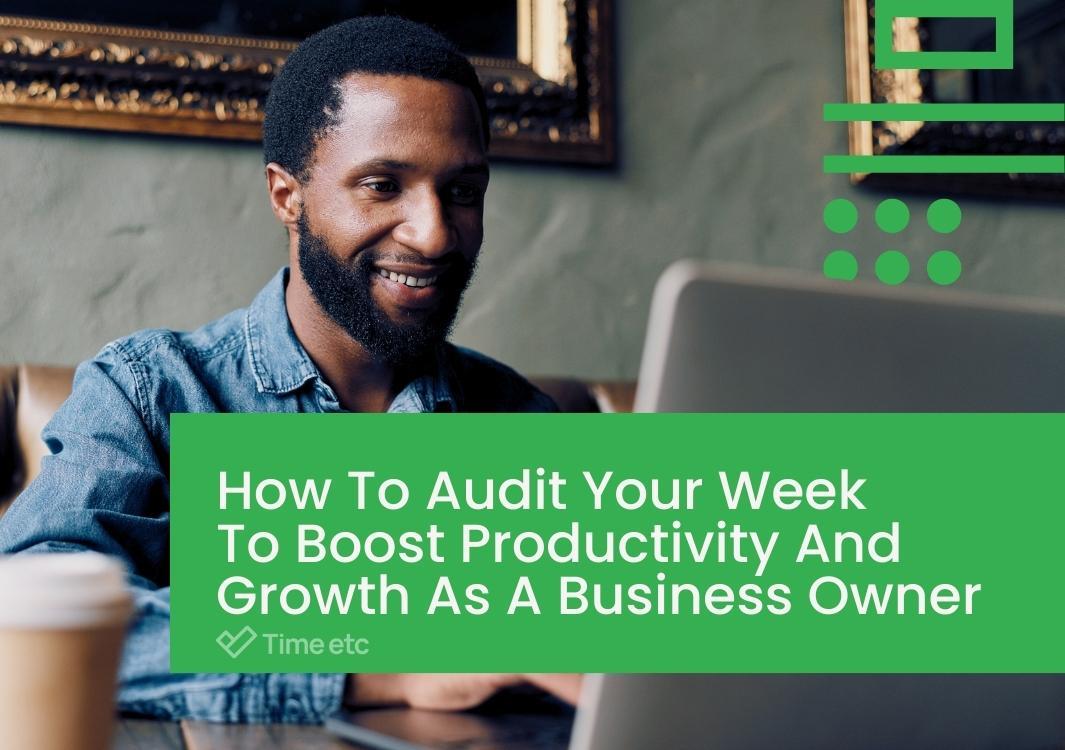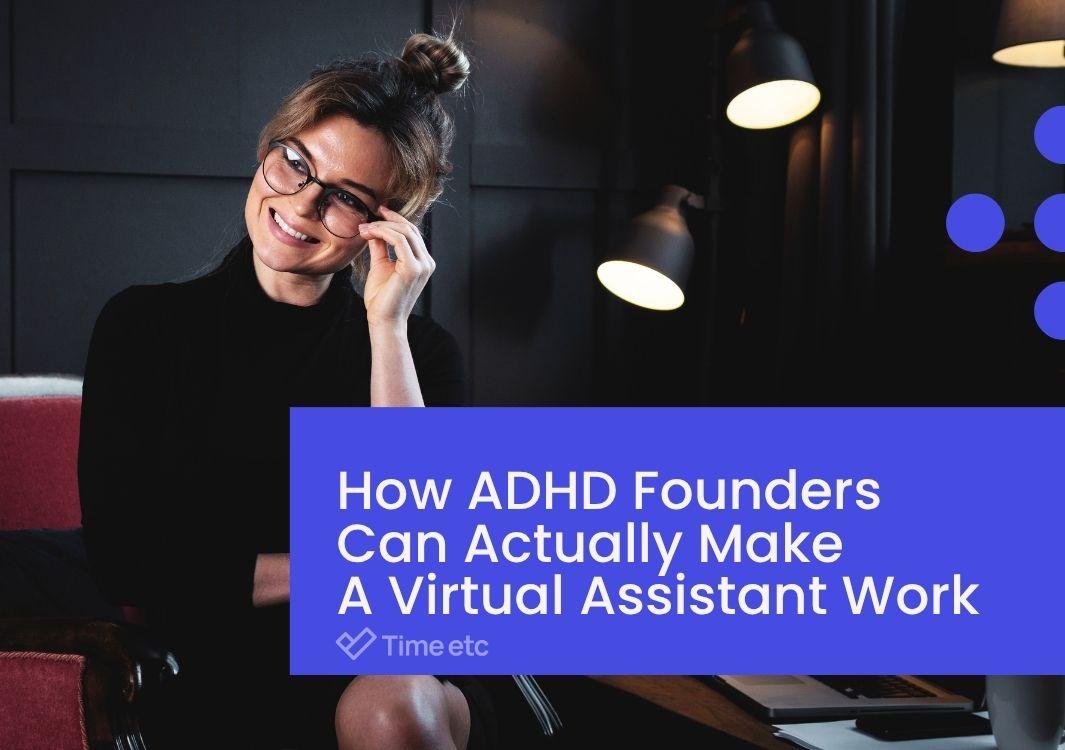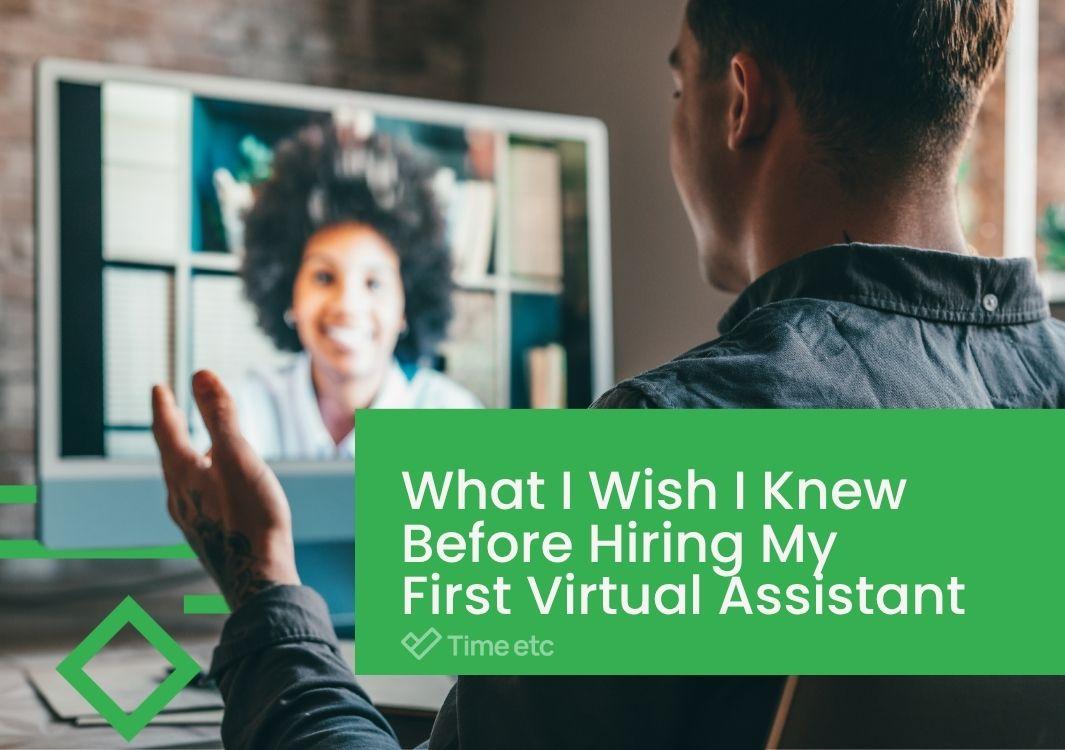Your phone buzzes with Teams notifications just as you're diving deep into financial projections. A calendar reminder pops up while you're finally making progress on that marketing campaign. Your brain, already juggling three different tasks, suddenly remembers you forgot to follow up with that potential client yesterday.
Sound familiar?
If you're running a small business, you already know the mental gymnastics required to keep everything moving forward. But for founders living with Attention Deficit Hyperactivity Disorder (ADHD), these day-to-day responsibilities can hit a little differently.
The thing is, the entrepreneurial world celebrates the very qualities that often go hand-in-hand with ADHD: creativity, risk-taking, thinking outside the box, and seeing connections others miss. Yet the operational side of business can feel like it's designed for completely different brains. The constant notifications, endless to-do lists, and competing priorities create a perfect storm for anyone whose brain craves focus but struggles to follow through.
The good news is that you’re not alone—and you’re not without options.
There’s a growing wave of tech and tools designed to meet these exact challenges. The right setup can capture ideas before they vanish, shield your focus during deep work, organize your priorities into clear steps, and nudge progress without the overwhelm.
So, let’s explore some of the best resources available right now that help make running a business feel more manageable, more focused, and more rewarding.
The reality for founders with ADHD
If you live with ADHD, you already know the rollercoaster it can be. Time slips away more easily than you’d like. Staying focused can feel like chasing something that doesn’t want to be caught. Task-switching can leave you drained, with half-finished projects scattered around you.
Starting and growing a business is rarely straightforward, and when you add ADHD into the mix, the experience takes on a whole new layer of complexity.
Time blindness happens because ADHD brains process time in a unique way. When you’re absorbed in something you enjoy, hours can slip by in what feels like minutes. But with tasks that feel boring or draining, every moment can drag, making it tough to judge how long things really take.
This difficulty often leads to over-promising and under-delivering, not because of poor intentions but because the brain misjudges timescales. The weight of constantly feeling “behind” can build frustration and guilt, which makes motivation even harder to summon the next time around.
Struggles with focus come from differences in how the brain handles incoming information. Neurotypical brains can block out background noise and distractions pretty easily, but ADHD ones take in much more at once. That flood of input can be exhausting, making it harder to stay locked in, especially for routine or repetitive tasks.
Switching between tasks can also be tougher. ADHD brains need extra time and effort to shift between different types of thinking, so what looks like procrastination or poor time management is often the brain working overtime just to make the transition. In a business setting, this can make juggling multiple responsibilities feel even more demanding.
As well as these daily challenges, many ADHD founders carry an invisible weight: shame about missing deadlines, embarrassment about being disorganized, guilt for forgetting important details, or fear about letting people down. It’s heavy to hold that inside while also trying to appear confident and in control in front of clients, investors, or your team.
These aren’t small hurdles; they shape the way daily decisions are made, the way teams are led, and the way a business grows. That's why having the right support and resources is not an optional luxury for founders with ADHD. It's the foundation that makes long-term success possible.
With solid resources and systems around you, you don’t have to burn so much energy fighting against the parts of your brain that work differently. Instead, you get to channel that energy into the areas where you naturally shine. This shift doesn’t just improve business results; it also creates more space for your own well-being and sense of balance as a founder.

Tech and tools that actually work for ADHD brains
Living in today's world comes with one major advantage for ADHD founders: there’s an endless supply of technology designed to support focus, organization, and follow-through.
The most effective tools are ones that offer structure without limiting you, stimulation without pulling you off track, and accountability that empowers rather than shames. Here are five tech solutions that actually fit the way ADHD brains work—and make life a lot easier.
Here are five solutions that help do just that...
1. Apps and extensions
Digital tools are often dismissed as “just another distraction,” but when chosen carefully, they can serve as powerful allies.
Amazing Marvin stands out as one of the most genuinely ADHD-friendly task management tools. This task manager combines flexible time-blocking with gamified productivity features. You can earn points for completing tasks, set up custom rewards, and even add funny sound effects when you finish something important. The visual progress tracking feeds that immediate feedback loop your ADHD brain craves.
Momentum Dashboard turns your browser into a productivity sanctuary. Instead of opening a new tab and immediately getting distracted by whatever was there before, you're greeted with a clean, beautiful interface featuring your daily focus, a to-do list, and an inspiring photo. It's like having a gentle reset button built right into your workflow.
News Feed Eradicator handles one of the biggest productivity killers for ADHD brains: social media rabbit holes. You can still access Facebook, Twitter/X, or LinkedIn for business purposes, but those endlessly scrolling feeds that trigger your dopamine-seeking brain are completely removed. You get the platform functionality without the distraction trap. (Available on Google Chrome and Firefox browsers.)
Stay Focusd gives you back control over your browsing habits. Set daily limits for distracting websites, and once you hit your quota, you're locked out. The brilliant part? You can customize which sites get blocked and for how long, so you're still accessible for genuine business needs.
Habitica takes gamification to the next level by turning your entire life into a role-playing game. Complete tasks to level up your avatar, earn rewards, and even join parties with other entrepreneurs for accountability. The app's clever combination of immediate rewards and long-term progression taps perfectly into the ADHD need for both instant gratification and meaningful goals.
Skipper was developed with the help of Carnegie Mellon scientists to cut out the chaos of endless open tabs. It transforms your messy browser by automatically saving and closing tabs you haven't used in a while, organizing them into "Sessions" you can revisit anytime. This means less clutter (for both your brain and your browser!) and the freedom to stay focused on the project in front of you without losing track of anything else.
Glasp helps you capture and organize all those brilliant insights you find online but inevitably forget about. Highlight text on any webpage, add tags and notes, and build a searchable knowledge base. Your ADHD brain's tendency to make connections between seemingly unrelated things becomes a superpower when you can actually find and reference those connections later.
Many adults with ADHD make the mistake of downloading every productivity app available, creating a complex system that becomes overwhelming and ultimately gets abandoned. So instead, focus on building simple, sustainable habits around the tools that provide the most relief for your unique challenges.

2. Gamification
ADHD brains thrive on novelty, stimulation, and quick feedback. That drive for something new and engaging keeps your mind alive and alert. Many habit trackers and productivity apps fall short because they lean on delayed rewards and repetitive systems. Checking the same little box over and over can quickly lose its spark, and once that happens, motivation slips away and you're back to square one.
So, if standard habit-tracking and productivity apps don’t quite cut it for you, here’s how you can take it further…
Turn your KPIs into a live scoreboard
Instead of hiding your business metrics in spreadsheets that you'll definitely forget to check, create a dashboard that feels like a video game HUD. Tools like Glide, Softr, or Notion API widgets can pull live data from Stripe, Google Analytics, or your CRM to create real-time scoreboards.
Assign experience points to revenue milestones, subscriber growth, or project completions. For example, when you hit $10K in monthly recurring revenue, you level up. When you complete a major project, you unlock a new achievement. Add visual progress bars that refill as you approach targets, exactly like watching your character's health regenerate in a game.
Bring a boss in
Working for yourself means ultimate freedom, but it also means zero external accountability. Boss as a Service is exactly what it sounds like: a platform where you submit tasks and deadlines, and a real human follows up to make sure you're staying on track. Miss a deadline? They can charge a pre-agreed penalty fee to your credit card.
The psychological impact is remarkable. That fear of losing money or the competitive desire to "beat" your assigned boss transforms mundane task completion into an engaging challenge. Your brain gets the external pressure it sometimes needs to push through and do what needs to be done.
Transform your to-do list into a 'game master
Set up an AI chatbot using tools like the GPT API, Zapier flows, or character creation platforms that acts like a video game quest giver. Feed it your business goals, current projects, and key metrics. Each morning, it assigns you "daily quests" based on your priorities and rewards you with points, virtual achievements, or even narrative story progression as you complete them.
The key is making the reward system feel genuine and exciting to your specific interests. Love fantasy novels? Your AI quest master can frame tasks as epic adventures. Prefer science fiction? Transform your business challenges into space missions with clear objectives and measurable success criteria.

3. AI prompts
ADHD often makes starting, prioritizing, and following through harder than it “should” be. That’s where ChatGPT and other AI platforms can make a significant difference.
Instead of staring at a blank page or feeling stuck deciding where to begin, you can prompt an AI to break a big task into smaller steps, draft a rough outline, or even suggest a starting point. That quick momentum can be the difference between circling in hesitation and moving forward with clarity.
While AI doesn’t offer the empathy, encouragement, or accountability that comes from a trusted coach or supportive friend, it does provide structure on demand. It’s always available, without judgment, and it can generate frameworks, reminders, and options in seconds. For someone whose attention shifts quickly, that kind of immediate support can be invaluable.
Here are specific prompts designed for common ADHD challenges to help you get started:
For productivity
"I have ADHD and I'm struggling to be productive today. I want to work on [insert task], but I feel distracted or overwhelmed. Please give me a simple step-by-step plan, broken into small actions with estimated times. Add encouragement or reward ideas after each step."
This kind of prompt works because it meets you where you are. It takes into account your state of mind and asks for the kind of structure that makes it easier for an ADHD brain to move forward. The AI helps by turning a big, overwhelming project into smaller steps and layering in encouragement along the way.
For a focus reboot
"I have ADHD and I want to do [insert task] but I'm having a hard time getting started. Can you guide me through a 5-step warm-up to get into focus? Include physical actions, a mental step, and one small starter action I can do in under five minutes."
Starting is often the hardest part for ADHD business owners. This kind of prompt gives you a gentle bridge from feeling scattered to finding focus. It adds a bit of physical movement to help regulate attention and makes sure that first step feels light and doable, so momentum can build naturally.
For prioritizing tasks
"Everything feels urgent and I'm overwhelmed. Here's my to-do list: [paste list]. Sort it into: 1) Must Do Today, 2) Nice to Do Today, 3) Can Wait or Delegate. Then help me pick 2–3 things to focus on for the most relief or momentum."
When your brain perceives everything as equally important (or equally overwhelming), this is when an outside perspective becomes especially helpful. A prompt like this cuts through the noise, bringing clarity and guiding your attention back to the tasks that truly move your business forward.
For tackling time blindness
"I have ADHD and often underestimate how long things take. I need help time-blocking my day for [list tasks]. Include realistic estimates, breaks, and buffer time. Help me decide what I can move to tomorrow."
Time blindness is one of the most challenging aspects of adult ADHD. This prompt builds in the buffer time and realistic expectations that help you actually stick to your schedule instead of feeling constantly behind.
For overcoming avoidance and procrastination
"I've been avoiding [task] because it feels [boring/too big/emotionally draining]. Help me explore why, then break it into one very small first step I can do now. Keep it encouraging and shame-free, and offer a mindset reframe if helpful."
Avoidance often happens because a task triggers some kind of emotional or mental resistance. This kind of prompt helps you uncover what’s behind the hesitation and then guides you toward a way forward without adding guilt or pressure.
For accountability
"I'm working on a long-term project: [project] and need help staying on track. Please break it into three milestones and suggest 1–2 daily or weekly actions. Also, give me a way to check in with you for accountability."
Long-term projects can feel impossible when your brain prefers quick wins. This kind of prompt breaks the work into clear checkpoints and adds regular moments of accountability, so even the biggest goals start to feel doable step by step.
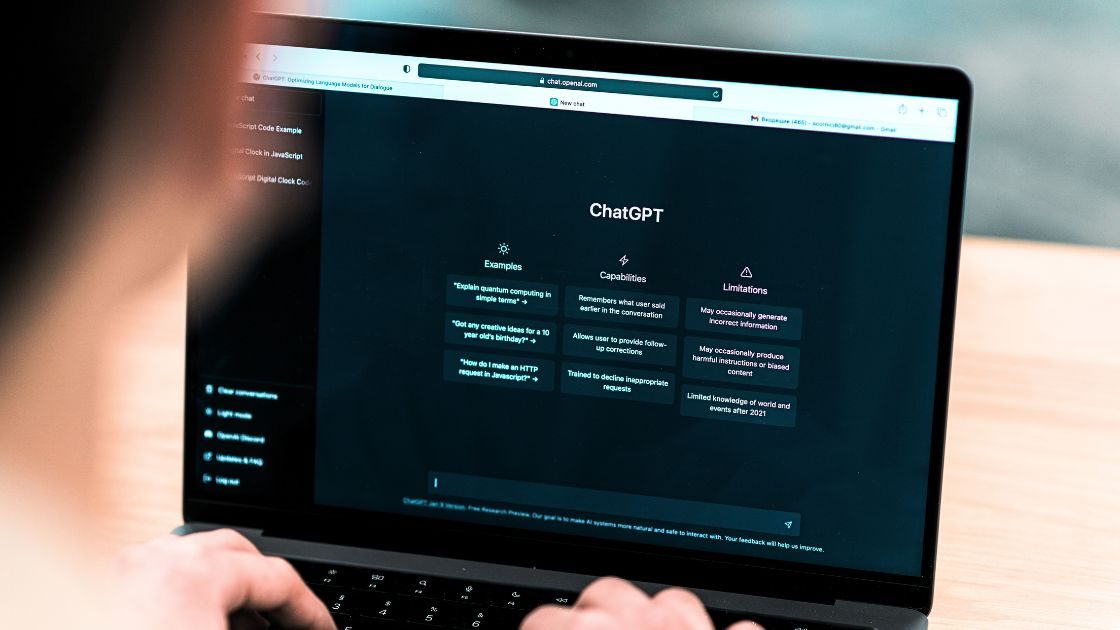
4. VR workspaces
Virtual reality might sound like overkill just for getting work done, but immersive workspaces can be surprisingly effective for ADHD founders.
These platforms create completely controlled environments where your brain can "lock in" to work mode without the constant visual and auditory distractions of your physical space, while still keeping your brain engaged with a setting that feels stimulating. Instead of fighting your environment, you’re shaping it to match how your attention works best.
Immersed gives you the chance to build your own private VR workspace with as many virtual monitors as you need. You get the screen space of a full command center without the clutter of a physical desk. You can set the scene in whatever way helps you focus—whether that’s a minimalist room with no distractions or a calming backdrop that makes work feel lighter. There are also shared spaces where you can sit in a virtual room with your team or even co-work alongside other entrepreneurs, which can help recreate the energy of being around people.
Spatial leans into collaboration. It’s built for brainstorming, planning, and group conversations. The three-dimensional layout makes it easier to map out complex ideas and stay engaged during longer sessions. Instead of staring at flat screens, you and your team can literally walk through concepts together.
For founders in creative industries, NVIDIA Omniverse is especially powerful. Its realistic, high-quality environments are designed for detailed design, architecture, and visual work. By giving you a space that feels immersive and contained, it can make deep creative focus easier while cutting down on the sensory overload that often comes with a busy office.

5. Virtual assistants (VAs)
At first glance, hiring a virtual assistant might feel like cutting corners. Think this sounds like cheating? Hear us out.
Even with the best apps, gamified systems, AI tools, and even VR workspaces, no one can do it all alone. That’s true for every founder, ADHD or not.
You’ve probably come across the statistic that business owners spend only about 32% of their time working on their business—strategic decisions, growth initiatives, and revenue-generating activities. The rest of the time gets swallowed up by operational details, administrative tasks, ad-hoc requests, and the constant “fires” that pop up throughout the week.
For ADHD founders especially, this creates a perfect storm. Tasks with an immediate payoff often lure us in because they deliver that quick hit of dopamine, even if they aren’t the best use of our time.
On the flip side, some founders experience the opposite problem. Routine business tasks can feel too draining and uninteresting to a dopamine-seeking brain, so they're the first to get put off in favor of more appealing work. That’s when deadlines slip, important emails go unanswered, or opportunities fall through the cracks.
Whether you’re someone who gets stuck in reactive mode or someone who avoids the routine stuff altogether, a virtual assistant solves both problems. Shifting the right work off your plate creates room for you to focus on what matters most, while making sure everything else runs smoothly in the background.
From a return-on-investment perspective, the numbers speak for themselves. Hiring a virtual assistant is far less expensive than spending your own high-value time on low-value work. Think about it: if your billable rate or the value of your time is $100 per hour, and you’re spending ten hours a week on admin, that’s $1,000 worth of energy spent on tasks someone else could handle for a fraction of the cost.
Maybe the biggest gift a virtual assistant can bring is helping you draw real lines between work and the rest of your life. Having someone you trust to keep the wheels turning means you don’t have to carry the weight of every unfinished task on your shoulders. You can actually step away, knowing things won’t fall apart, and give yourself permission to rest, be present with loved ones, and come back to your work refreshed and ready to give it your all.

What's the bottom line?
ADHD brains have more capacity for brilliance than they often get credit for, and the right tools can make all the difference in unlocking that potential.
Apps and extensions can give you clarity and structure. Gamification can inject all-important motivation and novelty. AI can serve as an external brain that never tires. VR can create focus zones that block out distractions. And virtual assistants handle the background noise that otherwise clutters your mind.
So experiment, explore, and piece together the toolkit that feels right for you. Progress, not perfection, is the real goal. They should reduce friction in your daily workflow while providing enough structure to keep you moving toward your business goals. They should feel supportive rather than restrictive, engaging rather than boring.
The most successful ADHD founders aren’t striving to fit into someone else’s mold; they’re building businesses that align with the way their strengths shine brightest. And with the right support, so can you.
Need a top-tier virtual assistant to help you get more done?
At Time etc, we help founders like you stay in your zone of genius. We’ll match you with an experienced, reliable virtual assistant who thrives on handling the things that trip you up so you can finally focus, follow through, and feel more in control.
Our entire service is designed around one thing: making your life easier.
Here's a glimpse of what you get when you partner with us:
- A pre-screened and vetted professional assistant matched to your needs and ready to go in just a few days.
- Zero hiring stress—we handle all the sourcing, onboarding, and HR admin.
- The freedom to delegate without the pressure to manage.
- Up to 90% lower costs than hiring in-house.
- Extra assistants at no extra cost when you need more hands on deck.
- Top-tier security and data protection.
- Total flexibility—scale your support up or down anytime.
Sound good? Getting started is simple.
Just let us know what you need and we'll take care of the rest.
Want $150 off your first month of virtual assistant support? Just answer a few quick questions to get personalized task recommendations and unlock our welcome discount.

